With the rapid development of artificial intelligence technology and the expansion of application scenarios, AI glasses, as one of its important landing scenarios, have also ushered in unprecedented development opportunities and shown a rapid growth trend. According to the statistics of Wellsenn XR, the global sales of AI glasses will be 1.52 million units in 2024, and it is expected to reach 3.5 million units in 2025 and 60 million pairs in 2029, with the Chinese market accounting for an important share. Many domestic manufacturers have launched AI glasses products, and consumer demand has shifted to multi-functional and personalized experience, putting forward higher requirements and expectations for comfort, battery life and visual effects. AI glasses have gradually entered the consumer market and are applied to multiple scenarios such as sports, tourism, office, and industry "experts", becoming an important tool to improve personal efficiency and quality of life. Recently, DeepSeek has injected new impetus into China's smart glasses industry by providing high-performance and low-cost AI solutions to help improve AI glasses in terms of cost, performance, flexibility, and user experience. The national policy is actively supporting the development of the AI glasses industry, and a number of policies have been introduced to provide strong support and guidance for the industry, proposing to accelerate the establishment and improvement of the standard system for intelligent electronic products, promoting the interconnection between smart terminals, and improving the service guarantee of wearable devices.
The CTTL Terminal Labs (CTTL-T) of the China Academy of Information and Communications Technology (CAICT) and S – Dream Lab have conducted a comprehensive and objective function, performance, usability and reliability test on the main use scenarios and functions of RayBan-Meta Wayfarer smart glasses from 7 modules and more than 60 test items in basic configuration, audio, image, image stabilization, interaction, battery life, security and privacy, aiming to provide reference evaluation indicators for the AI glasses industry and promote technological innovation and upgrading and industrial standardization process. Promote the benign and sustainable development of the industry ecology.
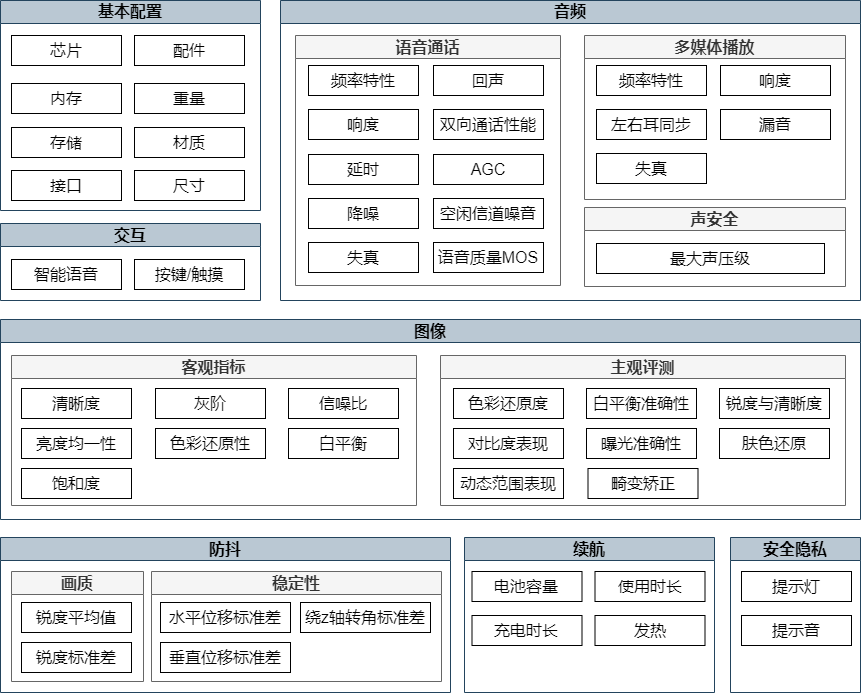
Figure 1 AI glasses test system

Figure 2 RayBan-Meta Wayfarer Smart Glasses
1. Basic configuration
It includes basic equipment information such as chips, storage, interfaces, and hardware design, and evaluates the basic computing capabilities and basic conditions of AI glasses. RayBan-Meta Wayfarer smart glasses are powered by the Snapdragon AR1 platform, 2GB of RAM and 32GB of storage.
2. Audio
In the two major scenarios of multimedia playback and voice communication, the performance of AI glasses in audio is tested through core indicators such as frequency response, loudness, noise reduction, delay, and distortion. The RayBan-Meta Wayfarer smart glasses perform well in the multimedia playback scene with low low frequency and loudness, and perform well in left and right ear synchronization, sound leakage prevention and distortion control. In the voice call scenario, its frequency response is still lacking in low frequency, the overall delay is low, the channel noise is less, it has good noise cancellation, two-way talk performance and echo cancellation effect, the automatic gain control of the receiver is effective when the volume is high, and it has passed the sound safety test to ensure the safety and comfort of use. It is suitable for daily multimedia playback, calls, sports and fitness, remote meetings and other scenarios.
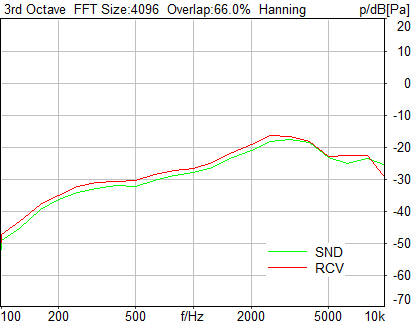
Figure 3 Characteristic Curve of Frequency Response of Multimedia Playback
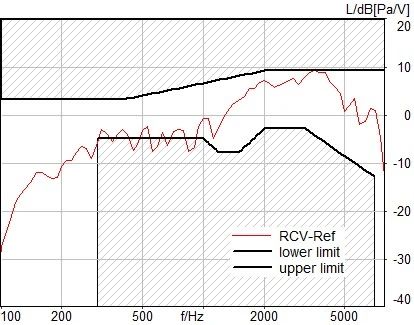
Figure 4 Voice call reception frequency response characteristic line
3. Images
Through the subjective and objective dimensions, the ability of the AI glasses camera to capture images is tested on the clarity, color, brightness, saturation and other indicators of photos and video content taken from the first perspective. RayBan-Meta Wayfarer smart glasses perform well in image clarity and color reproduction, but there are deficiencies in brightness uniformity and color saturation under specific light sources, which are suitable for daily shooting, but the detail capture and color performance of specific scenes under extreme light conditions need to be improved, which is suitable for the daily shooting needs of ordinary users.
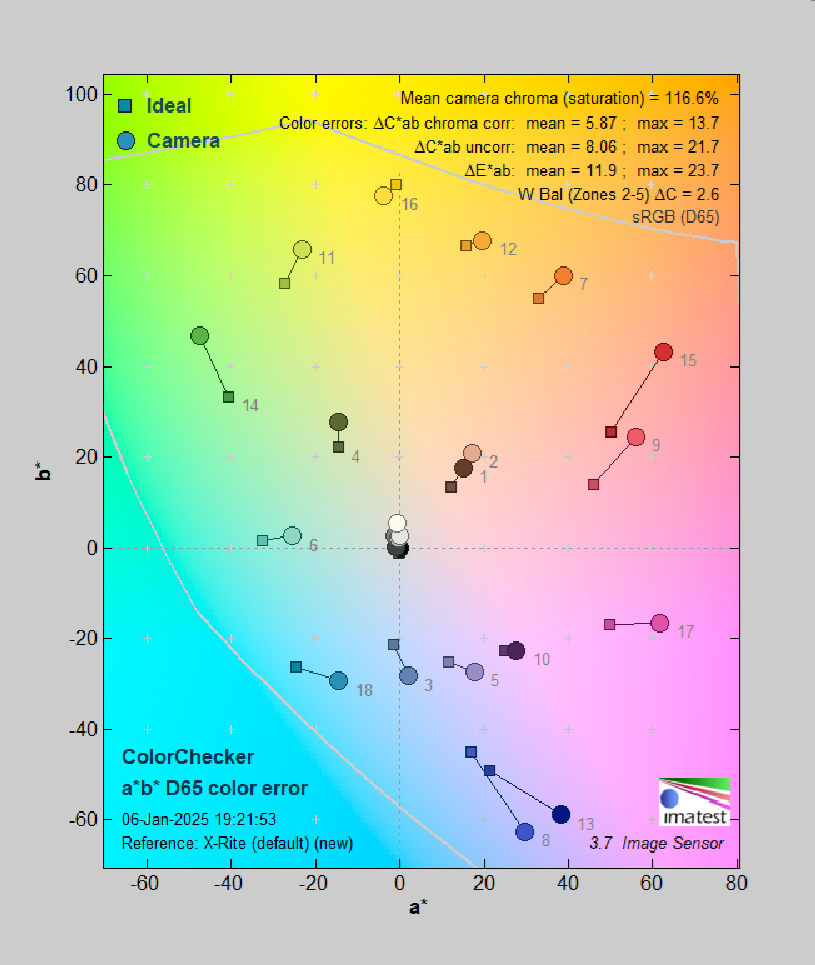
Figure 5 D65 light source test result
4. Stabilization
One of the main use cases of AI glasses is first-person video shooting, and image stabilization is one of the core technologies to improve shooting quality. According to the image stabilization processing ability of the captured video, the image quality and stability are objectively tested with reference to the "YD/T 4066-2022 Technical Requirements and Test Methods for Image and Video Image Stabilization Performance of Mobile Terminals". In terms of image stabilization, the image quality of RayBan-Meta Wayfarer smart glasses is comparable to that of mainstream mobile phones on the market, and the stability is slightly worse than that of mobile phones.
5. Interaction
The function and reliability of the interaction methods supported by AI glasses (such as voice, buttons, touch, etc.) are tested to evaluate their interaction capabilities. The voice assistant of the RayBan-Meta Wayfarer smart glasses performs well in terms of wake-up delay, and the response delay is slightly higher due to network reasons. Most users are satisfied with the convenience and user experience of the keys and touch functions, and there is room for improvement in sensitivity.
6. Endurance
As the basic indicator of wearable devices, the battery life of AI glasses is tested from the dimensions of battery capacity, charging time, use time, and heating. Compared with TWS earphones, RayBan-Meta Wayfarer smart glasses have a shorter usage time; Limited by the size of the product and the battery capacity, the use time is short in heavy load scenarios, and the temple heating is acceptable.
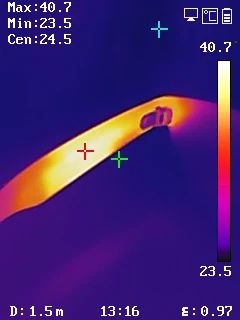
Figure 6 Thermometric Thermal Imaging Camera Test Results
7. Security and Privacy
In response to the security and privacy concerns of consumers and regulators, the reminder function of the device when shooting and recording was tested, and the privacy protection solution of the device was evaluated. Most of the experiencers believe that the RayBan-Meta Wayfarer smart glasses have moderate performance in terms of the brightness and volume of the prompt light and help to improve the user experience, but the prompt light may be too dark in the outdoor environment and the color is not easy to identify for some users, and the sound effect may be inaudible in a noisy environment, with the overall satisfaction rate of 70% and 85% respectively, and the user acceptance is good, and there is still room for improvement.
At the same time, the laboratory continues to update and iterate on the existing evaluation schemes, ensure the quality and performance of products in a professional and fair evaluation way, lay a solid foundation for its wide application, provide rich consumer references and suggestions for the public, and guide the healthy and sustainable development of the industry.
Click this link to view the original report.
contact person:
Luo Min 18911931903